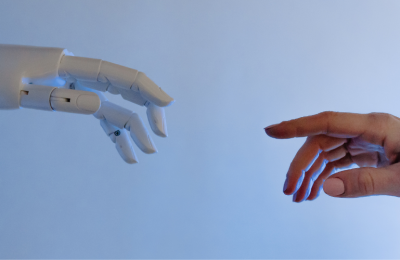One year on from the first COVID-19 lockdown, Cheryl Lythgoe, Matron at Benenden Health, offers advice to businesses on how they can support employees’ physical health whilst working from home.
Twelve months ago, when many businesses up and down the country shifted their operations to home working, the prospect of employees setting up workspaces away from the office was widely seen as a short-term measure.
However, one year on, and with stay-at-home restrictions still in place, as much as 40 per cent of the UK workforce are still working from home, with more than 11 million people operating in environments that aren’t necessarily conducive to physical health. Musculoskeletal (MSK) problems – conditions that affect the joints, bones and muscles – have risen, with the Institute for Employment Studies revealing a “huge uptick” in reports of back pain since the advent of remote working prompted by the pandemic.
With the prospect of many businesses exploring hybrid models to ensure a healthy work-life balance, employers should – if they haven’t already – look at what they can do to enable staff to work healthily and productively from home. Here are five tips to make this process effective and stress-free as possible.
Change the mindset around home working
Up to this point, home working may have been seen as a short-term measure by both employers and employees. However, now is a good time to consider whether the reality is that in some shape or form, remote working will have a permanent role to play within your organisation.
If so, changing the mindset of the business and your employees into believing and accepting that home working may be part of their lives in the long-term is an important step. This acceptance can encourage employees to consider their space at home as a permanent fixture and as such, they will be more inclined to consider changes than if they believe it will just be ‘for a little while longer.
Employers have the same legal duty of care for remote working employees as they do for office-based workers, so it’s important to change your mindset to ensure you are considering the safety of employees in their own home in the same way you would if they were in an office.
Conduct a remote risk assessment
In a given workplace, risk assessments allow employers to keep a tab on the physical wellbeing of their employees’ workspaces: remotely, this is much more difficult to achieve; and the impact of COVID-19 on business continuity has meant that this has – understandably – fallen off the list of many organisations.
A comfortable workforce is a more productive one, so it’s important that employers take some time to see if their teams’ needs are being met whilst working remotely.
For the best uptake, keep questions short and pointed. Ask each of your team members what they lack and what they need.
Invest in the basics
Ordinarily, those who spend a lot of their day sitting (e.g. at a computer) would have a reasonably ergonomic chair and desk set-up, allowing the spine to be elongated. Poor seating arrangements equate to us sitting in “C” shape, which is the root cause of many MSK problems, whether or not they are pre-existing.
As such, ensuring employees have a height-adjustable chair, a peripheral mouse, a wrist wrest and a footrest in place is a simple yet hugely important step in combating potential MSK issues. While most employees may have similar requirements, ensure that you are not simply adopting a one size fits all approach and that you support individuals that have specially-adapted workspaces in the office to accommodate these requirements at home.
If providing all employees with the right equipment is too much of a practical or financial challenge, there is some compromise “hacks” to help you on your way. Encouraging employees to use a book or an angled lever arch file to elevate a laptop to a more ergonomic height and position is a straightforward solution and above all, simply ensure employees are not conducting their working day from their sofa: it’s an absolute no-no in terms of your posture!
Encourage regular movement
A typical workplace is a hubbub of banter, interruptions and meetings – all of which make us get up from our seats and walk around, even if only to the water cooler. Remote working is seeing more of us spend protracted periods of time sat stationary. We need to move, whether that’s proactively walking or stretching ourselves out every so often.
Whether it’s going for a walk, marching on the spot or shrugging our shoulders gently every so often, these actions will pay dividends to aching bodies so encouraging remote workers to move every half hour can help avoid the dreaded seize-up.
Consider if you can gamify exercise for your team and help bring out some camaraderie. A simple challenge, that everyone in the business can complete, could act as a real incentive. This approach not only facilitates exercise but also shows your team that taking a quick break and looking after their health is endorsed from the top down.
For more ways to promote keeping mobile within your organisation, you can download our guide here which features a range of beneficial daily exercises.
Provide access to physiotherapy
Rapid access to physiotherapy, particularly first contact physiotherapy, will be an ever-increasing need during remote working, for all of the reasons above.
There’s already a backlog of patients waiting to be seen, so it pays to have a partner on your side that can provide your team with rapid assessment and referrals if needed. Timely intervention from physiotherapists isn’t just about getting the injured back to work; it’s about keeping healthy people at work and away from a long-term injury.
By taking action and supporting employees to work healthily and have access to relevant healthcare, employers can show commitment to their staff, express a proactive attitude to the future and cultivate a healthy and productive workforce to the benefit of everyone within the organisation.
For more information, go to https://www.benenden.co.uk




















